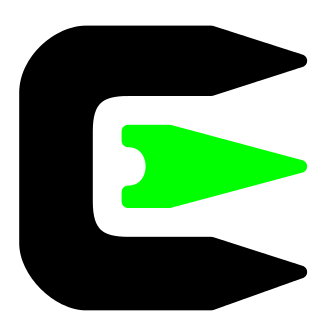
Cygwin is a POSIX-compatible programming and runtime environment that runs natively on Microsoft Windows. Under Cygwin, source code designed for Unix-like operating systems may be compiled with minimal modification and executed.
Linux has several filesystem drivers for the File Allocation Table (FAT) filesystem format. These are commonly known by the names used in the mount command to invoke particular drivers in the kernel: msdos, vfat, and umsdos.

The system utility fsck is a tool for checking the consistency of a file system in Unix and Unix-like operating systems, such as Linux, macOS, and FreeBSD. A similar command, CHKDSK, exists in Microsoft Windows and its predecessor, MS-DOS.
The Filesystem Hierarchy Standard (FHS) is a reference describing the conventions used for the layout of a UNIX system. It has been made popular by its use in Linux distributions, but it is used by other UNIX variants as well. It is maintained by the Linux Foundation. The latest version is 3.0, released on 3 June 2015.
A chroot on Unix and Unix-like operating systems is an operation that changes the apparent root directory for the current running process and its children. A program that is run in such a modified environment cannot name files outside the designated directory tree. The term "chroot" may refer to the chroot(2) system call or the chroot(8) wrapper program. The modified environment is called a chroot jail.
fstab is a system file commonly found in the directory /etc on Unix and Unix-like computer systems. In Linux, it is part of the util-linux package. The fstab file typically lists all available disk partitions and other types of file systems and data sources that may not necessarily be disk-based, and indicates how they are to be initialized or otherwise integrated into the larger file system structure.
The mtab file is a system information file, commonly found on Unix-like systems.

df is a standard Unix command used to display the amount of available disk space for file systems on which the invoking user has appropriate read access. df is typically implemented using the statfs or statvfs system calls.
udev is a device manager for the Linux kernel. As the successor of devfsd and hotplug, udev primarily manages device nodes in the /dev directory. At the same time, udev also handles all user space events raised when hardware devices are added into the system or removed from it, including firmware loading as required by certain devices.
The seven standard Unix file types are regular, directory, symbolic link, FIFO special, block special, character special, and socket as defined by POSIX. Different OS-specific implementations allow more types than what POSIX requires. A file's type can be identified by the ls -l command, which displays the type in the first character of the file-system permissions field.

The file command is a standard program of Unix and Unix-like operating systems for recognizing the type of data contained in a computer file.
The proc filesystem (procfs) is a special filesystem in Unix-like operating systems that presents information about processes and other system information in a hierarchical file-like structure, providing a more convenient and standardized method for dynamically accessing process data held in the kernel than traditional tracing methods or direct access to kernel memory. Typically, it is mapped to a mount point named /proc at boot time. The proc file system acts as an interface to internal data structures about running processes in the kernel. In Linux, it can also be used to obtain information about the kernel and to change certain kernel parameters at runtime (sysctl).
In Linux systems, initrd is a scheme for loading a temporary root file system into memory, to be used as part of the Linux startup process. initrd and initramfs refer to two different methods of achieving this. Both are commonly used to make preparations before the real root file system can be mounted.
In Unix-like operating systems, a loop device, vnd, or lofi is a pseudo-device that makes a computer file accessible as a block device.
Mounting is a process by which a computer's operating system makes files and directories on a storage device available for users to access via the computer's file system.
Linux startup process is the multi-stage initialization process performed during booting a Linux installation. It is in many ways similar to the BSD and other Unix-style boot processes, from which it derives.
In computer operating systems, mkfs is a command used to format a block storage device with a specific file system. The command is part of Unix and Unix-like operating systems. In Unix, a block storage device must be formatted with a file system before it can be mounted and accessed through the operating system's filesystem hierarchy.
GVfs is GNOME's userspace virtual filesystem designed to work with the I/O abstraction of GIO, a library available in GLib since version 2.15.1. It installs several modules that are automatically used by applications using the APIs of libgio. There is also FUSE support that allows applications not using GIO to access the GVfs filesystems.
In Unix-like operating systems, a device file or special file is an interface to a device driver that appears in a file system as if it were an ordinary file. There are also special files in DOS, OS/2, and Windows. These special files allow an application program to interact with a device by using its device driver via standard input/output system calls. Using standard system calls simplifies many programming tasks, and leads to consistent user-space I/O mechanisms regardless of device features and functions.

In Unix and operating systems inspired by it, the file system is considered a central component of the operating system. It was also one of the first parts of the system to be designed and implemented by Ken Thompson in the first experimental version of Unix, dated 1969.





